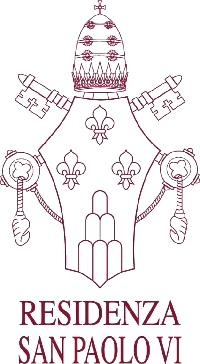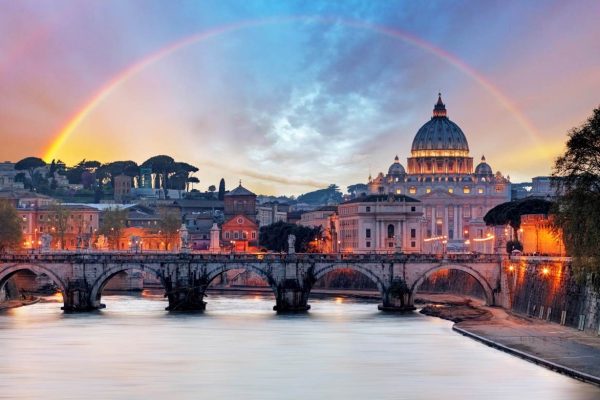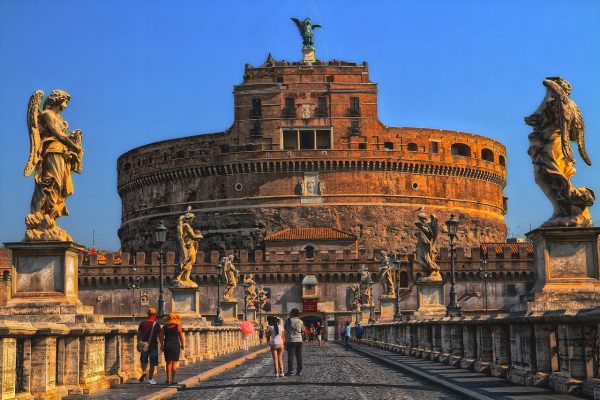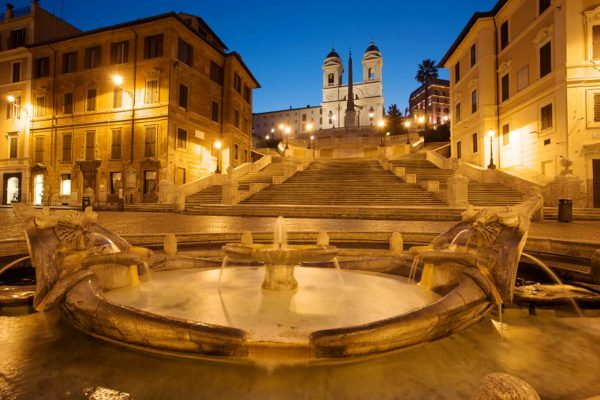 Chargement...
Chargement...
 Chargement...
Chargement...
The Sistine Chapel (Italian: Cappella Sistina) is a chapel in the Palace of the Vatican, the official residence of the Roman Catholic Pope in the Vatican City. It was built between 1475 and 1483, in the time of Pope Sixtus IV, and is one of the most famous churches of the Western World. The name Sistine is derived from the Italian sistino meaning of or pertaining to Sixtus IV.
Architecture
The chapel is rectangular and measures 40.93 meters long by 13.41 meters wide (the dimensions of the Temple of Solomon, as given in the Old Testament). It is 20.70 meters high and is roofed by a flattened barrel vault, with small side vaults over the 6 centered windows. The pavement (15th century) is in opus alexandrinum (see opus).
A transenna in marble by Mino da Fiesole, Andrea Bregno and Giovanni Dalmata divides the chapel into two parts; the wider one, together with the altar, is reserved for proper religious ceremonies and other clergy uses, and the smaller one for the faithful. The passage (cancellata, gateway) was originally in gilt iron and more central; it was moved toward the faithful area to grant a wider space for the pope. By the same artists is the Cantoria, the space for the chorus.
During important ceremonies, side walls are covered with a series of tapestries (by Raphael) depicting events from the Gospels and the Acts of the Apostles.
The architectural plans were made by Baccio Pontelli and the construction work was supervised by Giovannino de Dolci between 1473 and 1484, at the orders of Sixtus IV.
The first mass in the Sistine Chapel was celebrated on August 9, 1483, as a ceremony by which it was consecrated and dedicated to the Assumption of the virgin Mary.
Wall Frescoes
The wall paintings were executed by premier painters of the Quattrocento: Perugino, Botticelli, Ghirlandaio, Rosellini, Signorelli and their respective workshops, which included Pinturicchio, Piero di Cosimo and Bartolomeo della Gatta. The subjects were historical religious themes, selected and divided according to the medieval concept of the partition of the world history into three epochs: before the Ten Commandments were given to Moses, between Moses and Christ’s birth, and the Christian era thereafter. They underline the continuity between the Old Covenant and the New Covenant, or the transition from the Mosaic law to the Christian religion.
The walls were painted over an astonishingly short period of time, barely eleven months, from July, 1481 to May, 1482. The painters were each required first to execute a sample fresco; these were to be officially examined and evaluated in January, 1482. However, it was so evident at such an early stage that the frescoes would be satisfactory that by October 1481, the artists were given the commission to execute the remaining ten stories.
The pictorial programme for the chapel was comprised of a cycle each from the Old and New Testament of scenes from the lives of Moses and Christ. The narratives began at the altar wall – the frescoes painted there yielding to Michelangelo’s Last Judgment a mere thirty year later – continued along the long walls of the chapel, and ended at the entrance wall. A gallery of papal portraits was painted above these depictions, and the latter were completed underneath by representations of painted curtains. The individual scenes from the two cycles contain typological references to one another. The Old and New Testament are understood as constituting a whole, with Moses appearing as the prefiguration of Christ.
The typological positioning of the Moses and Christ cycles has a political dimension going beyond a mere illustrating of the correspondences between Old and New Testament. Sixtus IV was employing a precisely conceived program to illustrate through the entire cycle the legitimacy of papal authority, running from Moses, via Christ, to Peter, whose ultimate authority, conferred by Christ, ultimately to the Pope of present. The portraits of the latter above the narrative depictions served emphatically to illustrate the ancestral lineage of their God-given authority.
The two most important scenes from the fresco cycle, Perugino’s Christ Giving the Keys to St. Peter and Botticelli’s The Punishment of Korah; both contain in the background the triumphal arch of Constantine, the first Christian emperor, who gave the Pope temporal power over the Roman western world. The triumphal arch alludes to the imperial grant of papal power of the Pope. Sixtus IV was thereby not only illustrating his position in a line of succession starting in the Old Testament and continuing through the New Testament up to contemporary times, but was simultaneously restating the view of the papacy as the legitimate successor to the Roman Empire.
Christ Giving the Keys to St. Peter
This fresco is located in the fifth compartment in the northern wall.
Among Perugino’s frescoes in the Chapel, the Christ Giving the Keys to St. Peter is stylistically the most instructive. The main figures are organized in a frieze in two tightly compressed rows close to the surface of the picture and well below the horizon. The principal group, showing Christ handing the gold and silver keys to the kneeling St. Peter, is surrounded by the other Apostles, including Judas (fifth figure to the left of Christ), all with halos, together with portraits of contemporaries, including one said to be a self-portrait (fifth from the right edge). The flat, open square is divided by coloured stones into large foreshortened rectangles, although they are not used in defining the spatial organization. Nor is the relationship between the figures and the felicitous invention of the porticoed Temple of Salomon that dominates the picture effectively resolved. The triumphal arches at the extremities appear as superfluous antiquarian references, suitable for a Roman audience. Scattered in the middle distance are two secondary scenes from the life of Christ, including the Tribute Money on the left and the Stoning of Christ on the right.
The style of the figures is inspired to Verrocchio. The active drapery, with its massive complexity, and the figures, particularly several apostles, including St. John the Evangelist, with beautiful features, long flowing hair, elegant demeanour, and refinement recall St Thomas from Verrocchio’s bronze group on Orsanmichele. The poses of the actors fall into a small number of basic attitudes that are consistently repeated, usually in reverse from one side to the other, signifying the use of the same cartoon. They are graceful and elegant figures who tend to stand firmly on the earth. Their heads are smallish in proportion to the rest of their bodies, and their features are delicately distilled with considerable attention to minor detail.
The octagonal temple with its ample porches that dominates the central axis must have had behind it a project created by an architect, but Perugino’s treatment is like the rendering of a wooden model, painted with exactitude. The building with its arches serves as a backdrop in front of which the action unfolds. Perugino has made a significant contribution in rendering the landscape. The sense of an infinite world that stretches across the horizon is stronger than in almost any other work of his contemporaries, and the feathery trees against the cloud-filled sky with the bluish hills in the distance represent a solution that later painters would find instructive, especially Raphael.
Scenes of the Life of Moses
Botticelli painted three scenes within the short period of eleven months: Scenes from the Life of Moses, The Temptation of Christ and The Punishment of Korah. He also painted, with much help from his workshop, in the niches above the biblical scenes, some portraits of popes which have been considerably painted over. In all these works his painting appears relatively weak.
The Scenes of the Life of Moses fresco is opposite The Temptation of Christ also painted by Botticelli. The two pictures are typologically related in that both deal with the theme of temptation. Botticelli integrated seven episodes from the life of the young Moses into the landscape with considerable skill, by opening up the surface of the picture with four diagonal rows of figures.
As the Moses cycle starts on the wall behind the altar, the scenes should, unlike the pictures of the temptations of Christ, be read from right to left: (1) Moses in a shining yellow garment, angrily strikes an Egyptian overseer and then (2) flees to the Midianites. There (3) he disperses a group of shepherds who were preventing the daughters of Jethro from (4) drawing water at the well. After (5,6) the divine revelation in the burning bush at the top left, Moses obeys God’s commandment and (7) leads the people of Israel in a triumphal procession from slavery in Egypt.
The Punishment of Korah
The message of this painting provides the key to an understanding of the Sistine Chapel as a whole before Michelangelo’s work. The fresco reproduces three episodes, each of which depicts a rebellion by the Hebrews against God’s appointed leaders, Moses and Aaron, along with the ensuing divine punishment of the agitators. On the right-hand side, the revolt of the Jews against Moses is related, the latter portrayed as an old man with a long white beard, clothed in a yellow robe and an olive-green cloak. Irritated by the various trials through which their emigration from Egypt was putting them, the Jews demanded that Moses be dismissed. They wanted a new leader, one who would take them back to Egypt, and they threatened to stone Moses; however, Joshua placed himself protectively between them and their would-be victim, as depicted in Botticelli’s painting.
The centre of the fresco shows the rebellion, under the leadership of Korah, of the sons of Aaron and some Levites, who, setting themselves up in defiance of Aaron’s authority as high priest, also offered up incense. In the background we see Aaron in a blue robe, swinging his incense censer with an upright posture and filled with solemn dignity, while his rivals stagger and fall to the ground with their censers at God’s behest. Their punishment ensues on the left-hand side of the picture, as the rebels are swallowed up by the earth, which is breaking open under them. The two innocent sons of Korah, the ringleader of the rebels, appear floating on a cloud, exempted from the divine punishment.
The principal message of these scenes is made manifest by the inscription in the central field of the triumphal arch: « Let no man take the honour to himself except he that is called by God, as Aaron was. » The fresco thus holds a warning that God’s punishment will fall upon those who oppose God’s appointed leaders. This warning also contained a contemporary political reference through the portrayal of Aaron in the fresco, depicted wearing the triple-ringed tiara of the Pope and thus characterized as the papal predecessor. It was a warning to those questioning the ultimate authority of the Pope over the Church. The papal claims to leadership were God-given, their origin lay in Christ giving Peter the keys to the kingdom of heaven and thereby granting him privacy over the young Church. Perugino painted this crucial element of the doctrine of papal supremacy immediately opposite Botticelli’s fresco.
The Temptation of Christ
The fresco which Botticelli began in July, 1481, is the third scene within the Christ cycle and depicts the Temptation of Christ. Christ’s threefold temptation by the Devil, as described in the Gospel according to Matthew, can be seen in the background of the picture, with the devil disguised as a hermit. At top left, up on the mountain, he is challenging Christ to turn stones into bread; in the centre, we see the two standing on a temple, with the Devil attempting to persuade Christ to cast himself down; on the right-hand side, finally, he is showing the Son of God the splendour of the world’s riches, over which he is offering to make Him master. However, Christ drives away the Devil, who ultimately reveals his true devilish form. On the right in the background, three angels have prepared a table for the celebration of the Eucharist, a scene which only becomes comprehensible when seen in conjunction with the event in the foreground of the fresco. The unity of these two events from the point of view of content is clarified by the reappearance of Christ with three angels in the middle ground on the left of the picture, where He is apparently explaining the incident occurring in the foreground to the heavenly messangers. We are concerned here with the celebration of a Jewish sacrifice, conducted daily before the Temple in accordance with ancient custom. The high priest is receiving the blood-filled sacrificial bowl, while several people are bringing animals and wood as offerings.
At first sight, the inclusion of this Jewish sacrificial scene in the Christ cycle would appear extremely puzzling; however, its explanation may be found in the typological interpretation. The Jewish sacrifice portrayed here refers to the crucifixion of Christ, who through His death offered of His flesh and blood for the redemption of mankind. Christ’s sacrifice is reconstructed in the celebration of the Eucharist, alluded to here by the gift table prepared by the angels.
Michelangelo’s painting
Michelangelo Buonarroti was commissioned by Pope Julius II in 1508 to repaint the ceiling, originally representing golden stars on a blue sky; the work was completed between 1508 and 1 November 1512. He painted the Last Judgment over the altar, between 1535 and 1541, being commissioned by Pope Paul III Farnese. Michelangelo felt that he was a more developed sculptor than a painter, but he accepted the offer.
The ceiling
In 1508 Michelangelo was commissioned by Pope Julius II to paint the vault, or ceiling of the chapel. It took him until 1512 to complete. To be able to reach the ceiling, Michelangelo needed a support; the first idea was by Bramante, who wanted to build for him a special scaffold, suspended in the air with ropes. But Michelangelo suspected that this would leave holes in the ceiling once the work was ended, so he built a scaffold of his own, a flat wooden platform on brackets built out from holes in the wall, high up near the top of the windows. He stood on this scaffolding while he painted.
The first layer of plaster began to grow mold because it was too wet. Michelangelo had to remove it and start again, but he tried a new mixture, called intonaco, created by one of his assistants, Jacopo l’Indaco. This one not only resisted mold, but also entered the Italian building tradition (and is still now in use). Michelangelo used bright colors, easily visible from the floor.
On the lowest part of the ceiling he painted the ancestors of Christ. Above this he alternated male and female prophets, with Jonah over the altar. On the highest section Michelangelo painted nine stories from the Book of Genesis.
Michelangelo was employed to paint only 12 figures, the Apostles, but when the work was finished there were more than 300. His figures showed the creation, Adam and Eve in the Garden of Eden and the Great Flood. The sketches are a really precious and curious document. Michelangelo used male models, even for the females, because female models were more rare and costly than male ones.
The Last Judgement
Last Judgment was an object of a heavy dispute between Cardinal Carafa and Michelangelo: the artist was accused of immorality and intolerable obscenity, having depicted naked figures, with genitals in evidence, inside the most important church of Christianity, so a censorship campaign (known as the « Fig-Leaf Campaign ») was organized by Carafa and Monsignor Sernini (Mantua’s ambassador) to remove the frescoes. When the Pope’s own Master of Ceremonies, Biagio da Cesena, said « it was mostly disgraceful that in so sacred a place there should have been depicted all those nude figures, exposing themselves so shamefully, and that it was no work for a papal chapel but rather for the public baths and taverns, » Michelangelo worked da Cesena’s semblance into the scene as Minos, judge of the underworld. It is said that when he complained to the Pope, the pontiff responded that his jurisdiction did not extend to hell, so the portrait would have to remain.
The genitalia in the fresco were later covered by the artist Daniele da Volterra, whom history remembers by the derogatory nickname ‘the breeches-painter’.
Restoration and controversy
The chapel has been recently restored (1981 through 1994). This restoration was initially surrounded by a heated controversy in the art world, some claiming it a success and a breakthrough revelation, while a few claiming it ruined the masterpiece. Some conservationists complained about the loss of a brown patina that had developed over centuries, comprised of candle smoke, soot, and repeated applications of poor quality varnish. Despite clear evidence to the contrary, they claim that this layer of murky material was actually applied by Michelangelo himself in order to « harmonise » what they called ‘ice-cream colors’. The bright colors reveal Michelangelo to have been a masterful colorist, and close-ups of the frescos show complex brushwork that would not be matched, nor even attempted until the Impressionist movement of the 19th century. Others comment that bright colors were necessary for the frescos to stand out in the gloom of the chapel, with its high, narrow windows. Now that the electric lighting has been removed and the frescos illuminated solely by the light from the windows, the original colours and effect have been restored.
Although no substantial evidence has been found proving that this was Michelangelo’s original intention, the argument is often disregarded.
Conclave
The election of a new Pope, the conclave takes place in the Sistine Chapel. In those occasions a chimney is installed in the roof of the chapel, from where comes out the smoke. If white smoke comes out: a new Pope has been elected. Black smoke: no successful election yet. Nowdays, the chapel is carefully searched for bugs, recorders, cameras, so that the conclave is kept secret.





